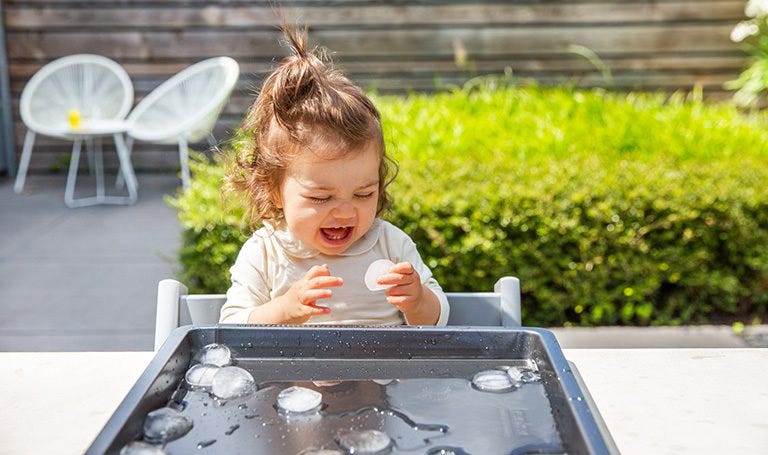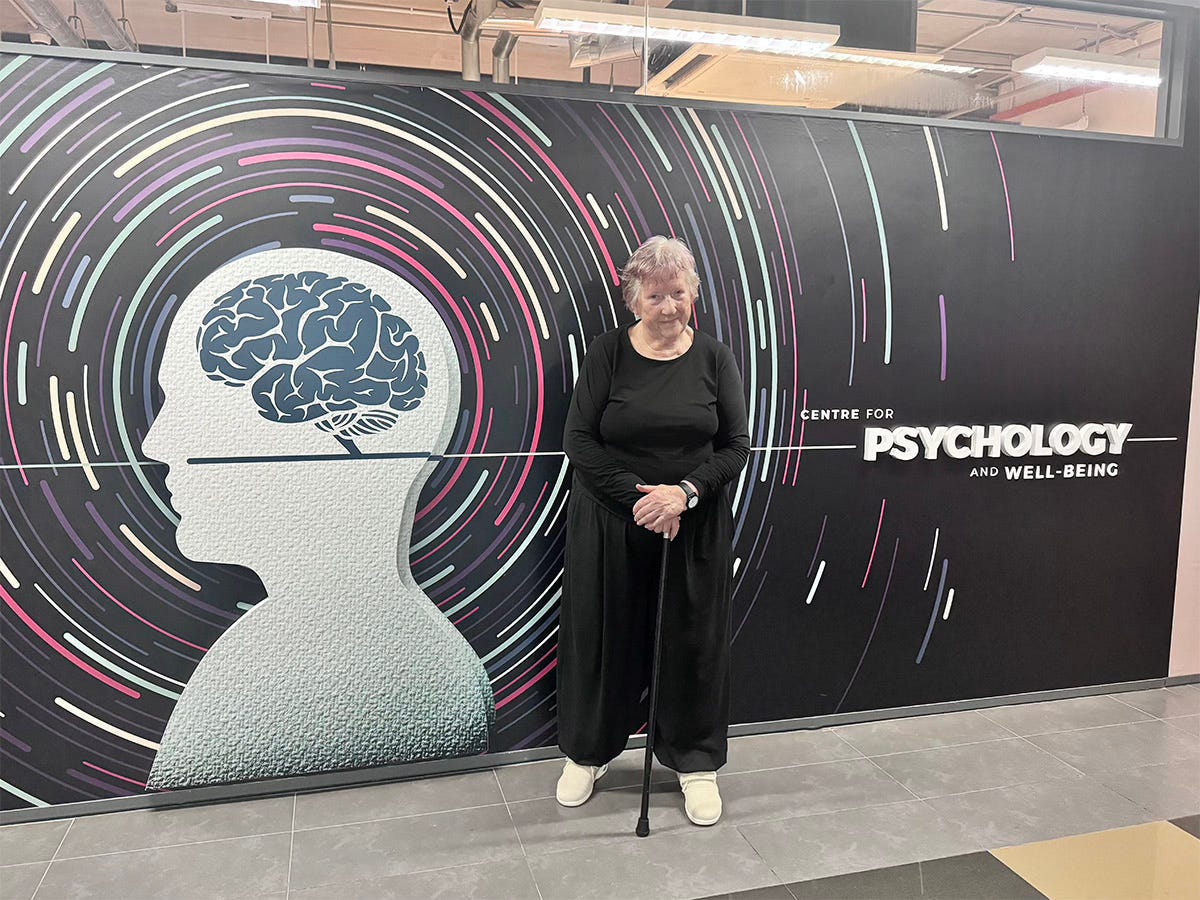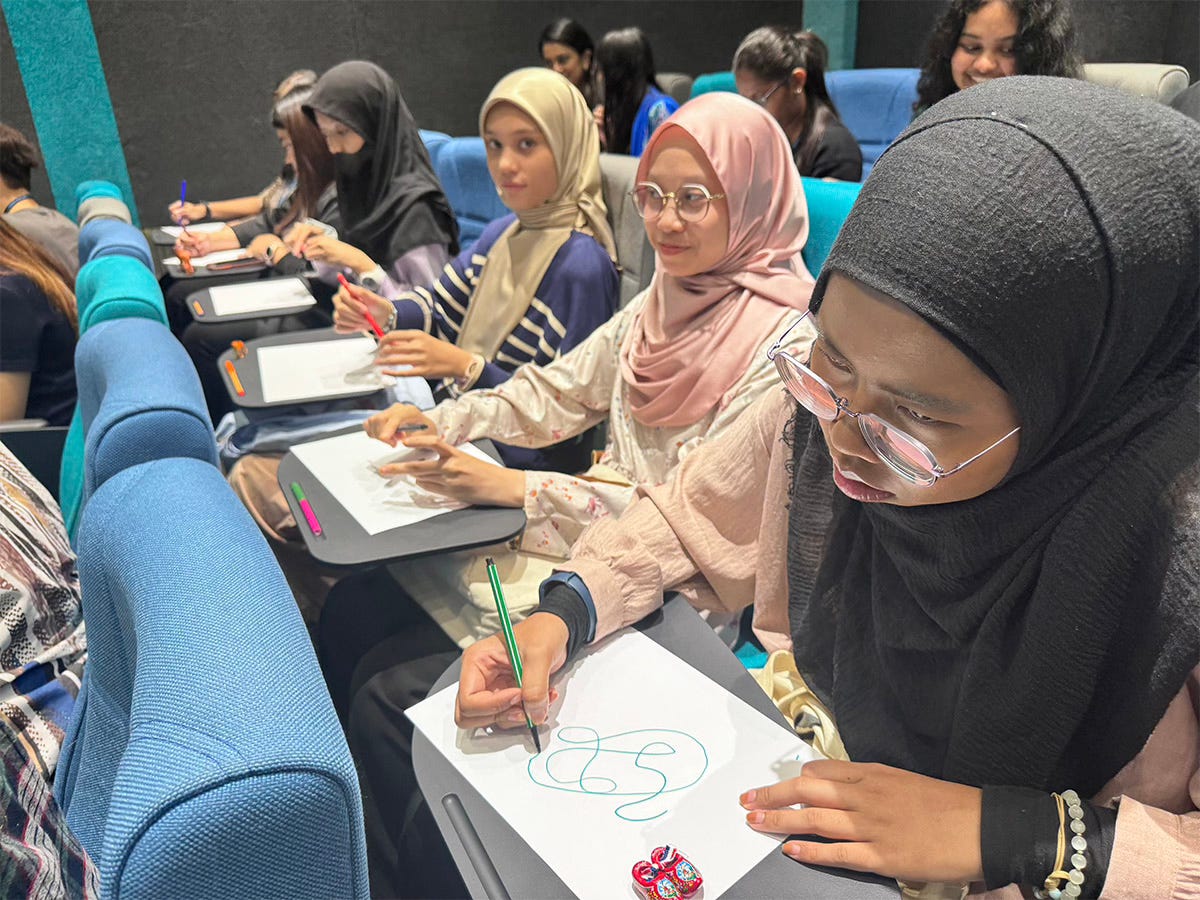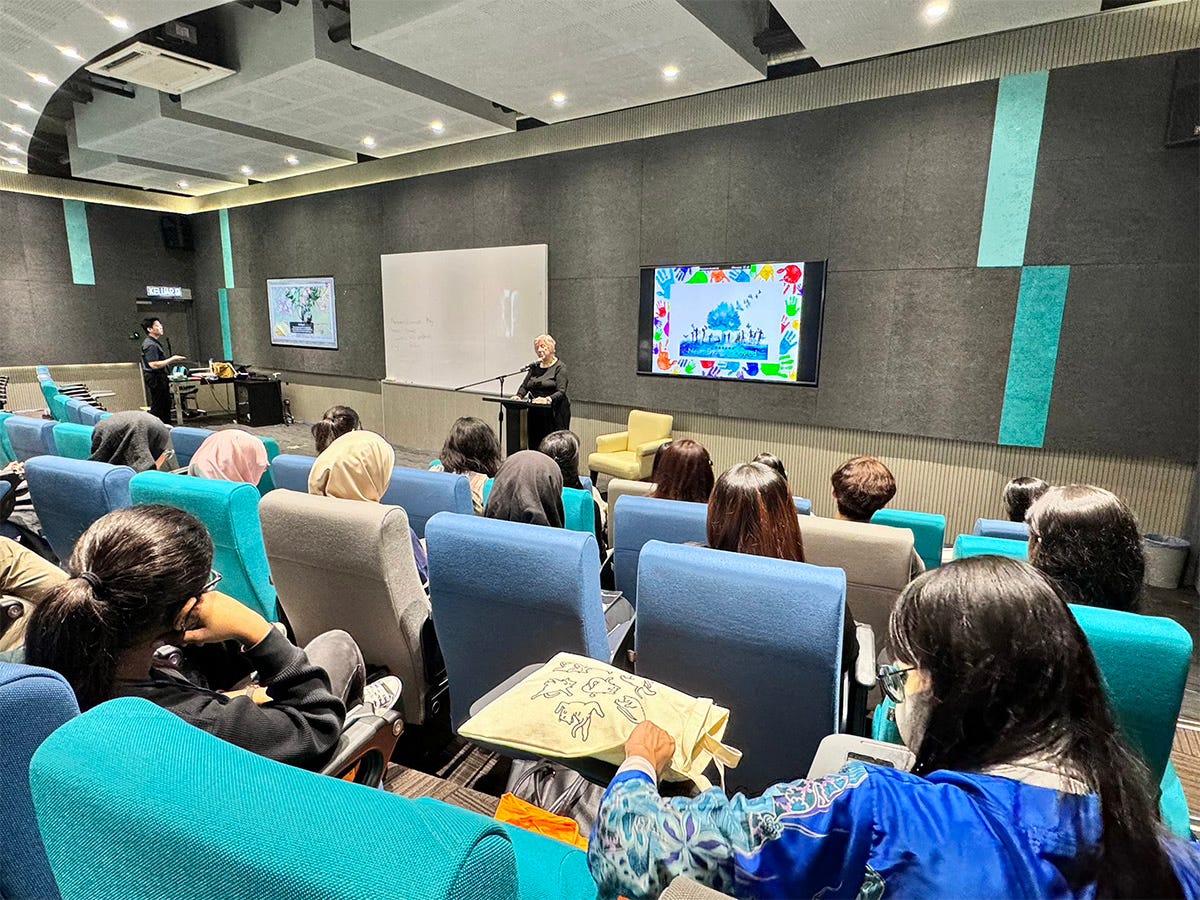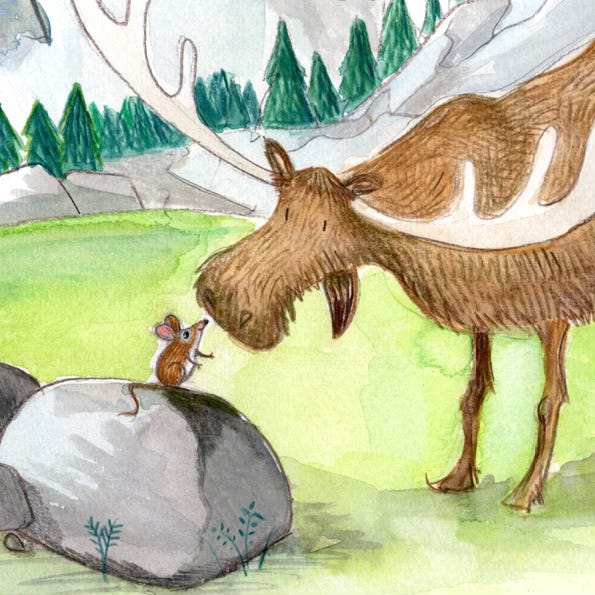Malaysia Report 1
Well, here I am in Kuala Lumpur awaiting our group of participants from UK, Latvia, Argentina and Switzerland, ready for NDP Jungle! I will write about it in detail after we have had our stay with the Temiar people and conducted research and training ‘live’ in situ. It is the only setting (so far!) where we can learn the theory and practice, apply it with groups of children and teenagers, and complete the assessments, all in one go.
It was such a pleasure to see some of you on our recent webinars as part of the free benefits for paid members. Remember, being a member of our ‘nest’ of paying subscribers includes a 10% fee reduction on any UK NDP online or live course, 4 free webinars per year, plus free advisory / consultation sessions. And of course, there is the paid section with articles, stories, and techniques.
I was sitting in a local café yesterday and watched some children with iced drinks, playing with the ice cubes. The cubes weren’t actually cubes, they were more like spheres, with holes in the middle. The game was to thread your straw through the ice-sphere, and then slide it end to end, repeatedly without dropping it (from the cold!). They were far more interested in the game than the drinks! As always, a reminder to us that water play, and its derivative, ice-play, is a source of constant enjoyment!
With love,
Dr Sue
Early April 2024
Main Article:
Ice and Water Play!
We have discussed the basics of NDP in previous Newsletters, namely: water play, rhythmic play, messy play and dramatic play. Although water play probably starts it all off, these contrasting play forms start and interact with other forms, rather than following a developmental pathway. Rhythmic play usually gives safety and security, and messy play is the adventure for the curious!
We shall explore more about dramatic play and drama and its significance in our development when we come to discuss ‘Embodiment-Projection-Role’. There will also be some downloadable worksheets in the next newsletter, which give various techniques for Water Play, Rhythmic Play, Messy Play and Dramatic Play – The basics of NDP!
I decided to test these ideas when I was invited to give a presentation on NDP at the Asia Pacific University in Kuala Lumpur, where they have a very ‘state-of-the-art’ psychology department.
Having established the importance of water-play, I went on to discuss with the students rhythmic play and messy play: the former giving security and safety, the latter providing opportunities for adventure and curiosity – in essence, drumming or mud-play! Participants then reflected on their own experience as small children and what they enjoyed – rhythm or mess!
I then gave a presentation which included the three paradigms, NDP, EPR and ToR followed by questions. What a surprise - the usually reticent Malaysian students were bristling with questions about the early play experience through NDP. They were especially wanting more knowledge about ‘pregnancy play’ which as we know is when NDP/Attachment begins (and where NDP differs from other theories which suggest a later start).
We also explored messy play that need not be wet and sticky! I will discuss this in detail in the next section.
More on my adventures next time!
With love,
Dr Sue
Bits and Pieces:
Please remember that if any of you are conducting NDP research, please let us know; it can be described here too!
We shall be announcing the NDP Supervisors course shortly. 3 Modules for people who are already qualified Supervisors, otherwise 6 Modules.
Check out Flute Theatre Co. (director Kelly Hunter MBE) - they are having an ‘International Festival for Autistic Individuals’ in London, 2024, with Shakespeare theatre productions. See HERE.
And finally, our bed-time story, another Moose and Mouse story:
Moose and Mouse Hear Some Sad News
Moose and Mouse, who live in the pine woods of Norway, were taking a stroll on the path that leads towards the river, that flows into the Big Water; that is their name for the large lake that is constantly filled by the river.
Mouse was very concerned that Moose was looking so sad, so she decided to ask him if something was troubling him. Instead of walking all the way to the Big Water, they stopped by the wooden bridge where Mouse had learnt to play Pooh sticks, and then crossed the bridge into the big field where the huge sycamore tree grew. This was the place they usually came ‘to have good chat’. The chats were about everything but especially if they were feeling angry or upset.
Moose smiled at his little friend but his eyes were very sad. ‘I know you have guessed that I am unhappy,’ he said to Mouse. ‘Do you remember when we went on the long journey to Mongolia?’ ‘Oh yes,’ said Mouse, ‘we went to see your family, and they were larger than you and their fur was darker.’
‘That’s right my friend,’ said Moose. ‘You have remembered well. I am sure you remember my big friend who said how lucky I was that you were travelling with me?’ ‘Yes, I do remember,’ said Mouse, ‘He was such a nice friend.’
‘Well, I’m sorry to have to share this with you, but my special friend has died. I just received a message.’ Mouse immediately felt so sad, and she patted Moose’s head with her tiny paw. ‘No wonder you don’t look happy, my Big Friend. He was a very special friend to you, even though you did not see him often.’
Moose just nodded his head, knowing that Mouse understood how he felt. The two of them sat quietly together in the shade of their special tree. They could smell the blossom of the meadow flowers, the bees were beginning a gently buzz, and they could hear the sound of the river gently flowing on its way. Mouse suddenly got up and ran towards the hedge, she found some orchids growing in the shade. She bit through the stem of one of them and dragged it back to the big tree. She gave it to Moose and said, ‘This is so you can remember your special friend – you must take it to the river and throw it in, and the river will take it on a long journey to your friend, and you can send a special message.’
Moose stood up and took the beautiful flower in his mouth; Mouse was settled on his head between his antlers, and Moose walked back to the wooden bridge. He faced in the direction of the flow of the river, and gently dropped then orchid into the water to take his message to his friend who was no longer alive.
‘Goodbye, sweet friend,’ said Moose.
‘Yes, goodbye,’ said Mouse.
And they started to walk back to their special patch of pine forest they called home.
Sue Jennings
The Moose and Mouse stories are written for children under the age of 6 years and address important issues in child development such as attachment, loss, playfulness, safety and fears. See https://www.ndpltd.org/meet-moose-and-mouse
(If you prefer to listen to these stories, they will shortly be available on YouTube ‘NDP Storytime with Sue Jennings’ and ‘Stories of Mouse and Mouse’)
Keep reading with a 7-day free trial
Subscribe to Sue Jennings Presents to keep reading this post and get 7 days of free access to the full post archives.





